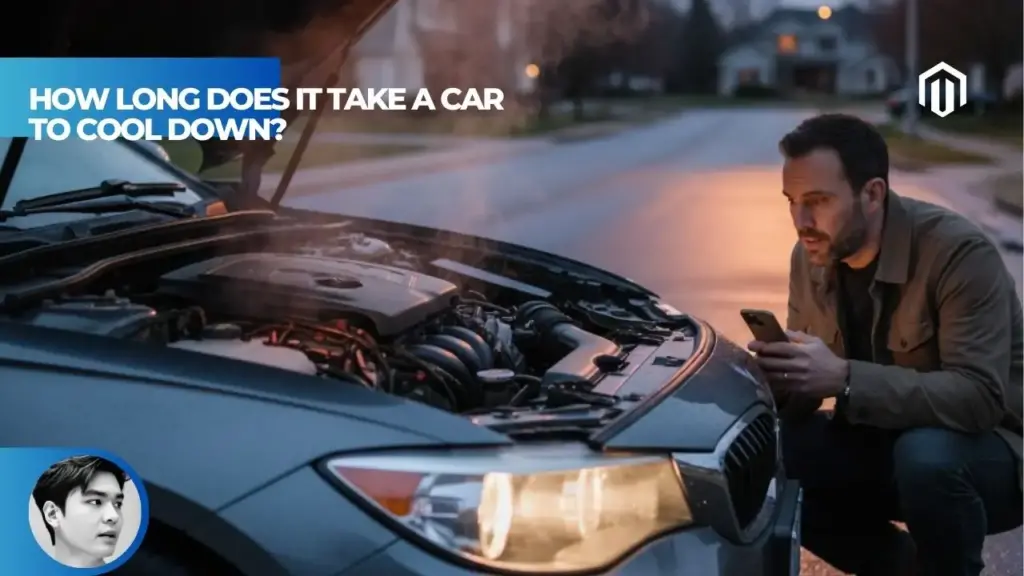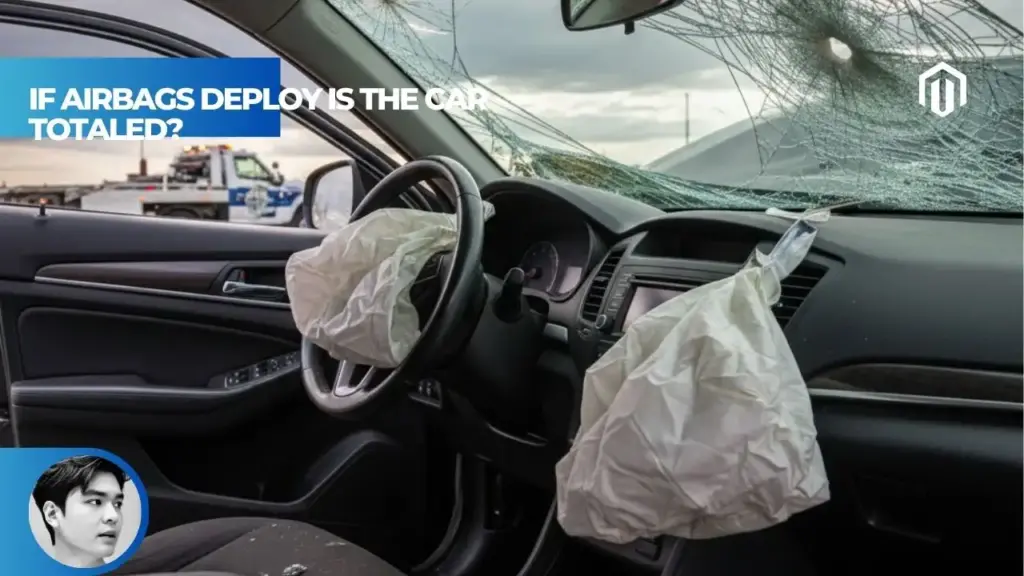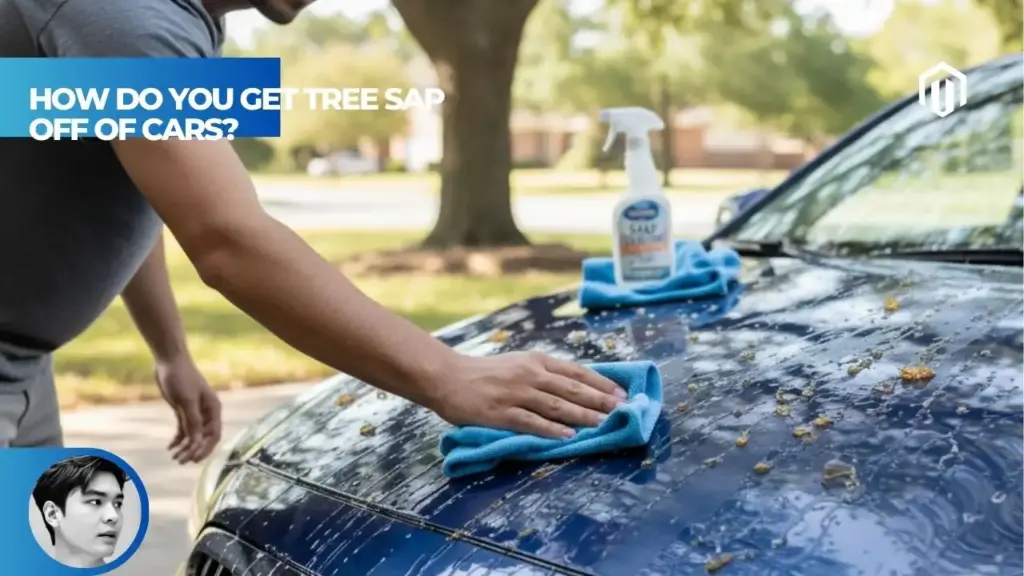You may also like:
- 【Explained】How Long Does It Take to Replace a Car Battery? (A Full Breakdown)
- 【Explained】How Long Does It Really Take to Charge a Car Battery? Complete Guide
- 【Explained】Car Won’t Jump Start, But Lights Are On: Top 5 Reasons & Fixes
- 【Explained】How Long Can a Car Sit Without Being Driven? The Dangers of Inactivity
- 【Explained】Why Does My Audi Car Key’s Red Light Blink But the Car Does Not Open? (5 Fixes)
A car battery typically lasts between two weeks and two months without driving before it loses charge, depending on the battery’s age, condition, and parasitic drain from vehicle electronics. Modern vehicles with keyless entry systems and advanced electronics may drain batteries faster, sometimes in as little as 10-14 days, while older cars with minimal electronics can maintain charge for up to 8 weeks[1].
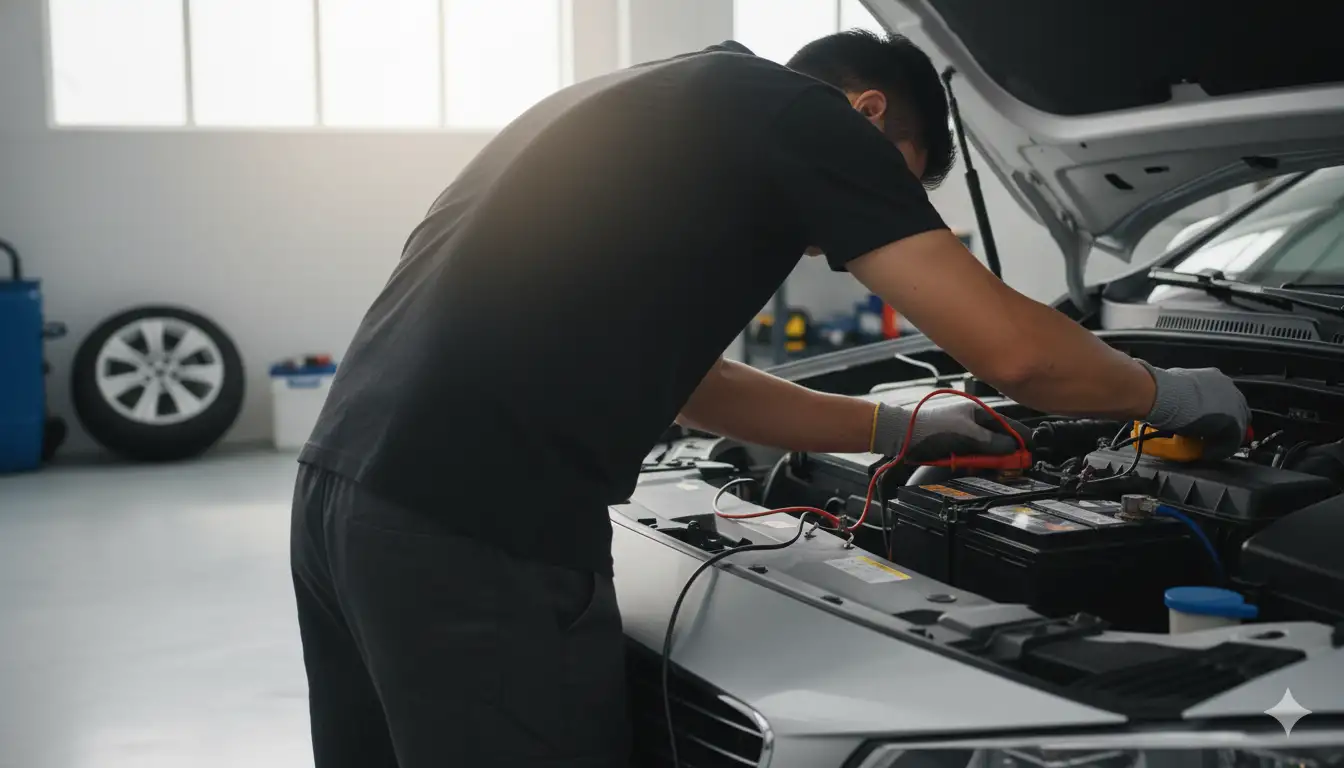
How Long Can a Car Sit Without Being Started?
The question of how long a car can sit idle concerns millions of American drivers, especially those with seasonal vehicles, work-from-home arrangements, or multiple cars. According to J.D. Power’s automotive research, if your car and battery are new and in good condition, the charge will last approximately two weeks without needing to start the vehicle[1]. However, the general recommendation from automotive experts is to turn the ignition on for 15 minutes once a week to ensure proper recharge.
Battery Life Without Driving Timeline
Understanding the timeline of battery discharge helps prevent unexpected dead batteries. Interstate Battery’s technical data shows that car batteries generally last 3-5 years in regular use, but sitting idle dramatically accelerates discharge rates[2]. The discharge timeline varies significantly based on multiple factors including battery type, vehicle age, and environmental conditions.
New Car Battery vs Old Battery Performance
The age of your battery plays a crucial role in how long it maintains charge without driving. A brand-new battery can hold its charge for 2-6 weeks when not in use, while batteries over three years old may struggle to last more than two weeks[3]. According to Autvex automotive specialists, the difference stems from internal chemical degradation that occurs naturally over time.
| Battery Age | Idle Time Before Discharge | Voltage Drop Rate |
|---|---|---|
| 0-1 year | 4-8 weeks | 0.002V per day |
| 1-3 years | 2-4 weeks | 0.004V per day |
| 3-5 years | 1-2 weeks | 0.008V per day |
| 5+ years | Less than 1 week | 0.015V per day |
New batteries benefit from fresh electrolyte solution and intact lead plates that resist sulfation. In contrast, older batteries have accumulated sulfate crystals on their plates, reducing their ability to hold charge effectively.
Battery Discharge Rate When Car Is Off
Modern vehicles continuously draw power even when parked, creating what mechanics call parasitic drain. The acceptable parasitic draw ranges between 25-50 milliamps for most vehicles, though luxury models with advanced features may draw up to 85 milliamps[4]. This constant drain means your battery loses approximately 0.5-1% of its charge daily when the vehicle sits idle.
Interstate Battery research indicates that batteries lose about 5% of their charge per month just sitting on a shelf at room temperature[2]. When installed in a vehicle, this discharge rate increases due to the continuous power requirements of onboard systems.
Car Not Starting After Sitting – Warning Signs
Recognizing early warning signs prevents complete battery failure and potential damage to your vehicle’s electrical system. When attempting to start a car after extended storage, watch for these indicators:
Visual Warning Signs:
- Dim headlights or interior lights
- Sluggish power window operation
- Dashboard warning lights flickering
- Clock reset or radio presets lost
Audible Warning Signs:
- Slow engine cranking sound
- Clicking noise when turning the key
- Complete silence when attempting to start
- Alarm system chirping weakly
If your vehicle exhibits these symptoms after sitting for just one week, you likely have excessive parasitic drain requiring professional diagnosis. For detailed guidance on battery replacement timing, consult Autvex’s battery replacement guide.
What Drains a Car Battery When Off
Understanding what draws power when your vehicle is parked helps identify potential problems and extend battery life. Modern vehicles contain dozens of electronic systems that require constant power, even when the ignition is off.
Parasitic Drain Car Systems
Parasitic drain refers to the electrical load present when all systems should be off. According to automotive electrical specialists, anything exceeding 100 milliamps indicates an electrical issue requiring immediate attention[4]. The industry standard suggests 50 milliamps or below as acceptable for most vehicles.
Normal Parasitic Drain Sources:
- Engine control module memory: 5-10 mA
- Radio memory and clock: 3-5 mA
- Security system: 5-10 mA
- Keyless entry receiver: 3-7 mA
- Power seat memory: 3-5 mA
These small draws add up quickly, especially in vehicles equipped with premium features. Luxury vehicles like newer BMW 5-Series models or Audi A6 vehicles may have double the parasitic drain of basic models due to their sophisticated electronics.
Car Electronics Draining Battery
Modern vehicles contain an average of 30 electronic control units (ECUs) that manage everything from engine performance to comfort features[5]. Each system requires standby power to maintain memory settings and respond to user inputs.
High-Drain Electronic Systems:
- Infotainment systems: Modern touchscreen units draw 15-25 mA continuously
- Telematics modules: OnStar, BMW Assist, and similar services use 20-30 mA
- Bluetooth modules: Constant scanning for paired devices uses 10-15 mA
- GPS tracking: Aftermarket or factory units draw 15-20 mA
- Dash cameras: Parking mode features consume 30-50 mA
Professional mechanics recommend disconnecting aftermarket accessories when storing vehicles for extended periods. These non-essential systems can double or triple normal parasitic drain rates.
Car Alarm Draining Battery Issues
Factory and aftermarket alarm systems rank among the top causes of excessive battery drain. A properly functioning factory alarm should draw no more than 10 milliamps, but faulty sensors or wiring can increase this to 200-300 milliamps[4].
Common alarm-related drain issues include:
- Faulty door sensors keeping the system partially active
- Aftermarket alarm installations with improper wiring
- Motion sensors with sensitivity set too high
- Remote start systems that fail to enter sleep mode
- LED indicators that remain illuminated continuously
Factors Affecting Battery Drain
Environmental and usage factors significantly impact how quickly your battery loses charge when not driving. Understanding these variables helps predict battery life and plan maintenance accordingly.
Extreme Weather Battery Drain
Temperature extremes accelerate battery discharge and reduce overall capacity. AAA’s automotive research shows that at 20°F, battery capacity drops by 30-50%, while at 95°F, internal discharge rates double[6]. These temperature effects compound when vehicles sit unused for extended periods.
| Temperature | Battery Capacity | Self-Discharge Rate |
|---|---|---|
| -10°F | 40% of rated | 1.5% per day |
| 32°F | 65% of rated | 0.8% per day |
| 70°F | 100% of rated | 0.5% per day |
| 95°F | 90% of rated | 1.0% per day |
| 110°F | 75% of rated | 2.0% per day |
Summer heat proves particularly damaging to idle batteries. High temperatures accelerate the evaporation of battery fluid and increase the rate of internal corrosion. Winter cold thickens engine oil and reduces battery chemical reactions, making starting more difficult even with a partially charged battery.
Battery Health and Inactivity Impact
Extended inactivity causes permanent battery damage through a process called sulfation. When batteries discharge below 12.4 volts and remain there, lead sulfate crystals form on the battery plates[2]. These crystals harden over time, permanently reducing the battery’s ability to accept and hold charge.
According to battery manufacturers, allowing a battery to remain discharged for more than 30 days can cause irreversible damage. The sulfation process accelerates exponentially once battery voltage drops below 12 volts, potentially ruining a battery in as little as two weeks of complete discharge.
Signs of a Dead Battery
Identifying battery problems early prevents inconvenient breakdowns and potential alternator damage. Regular testing and observation help catch issues before complete failure occurs.
Car Battery Voltage Testing
Voltage testing provides the most accurate assessment of battery health. A fully charged battery should read between 12.6 and 12.8 volts with the engine off[3]. Readings below 12.4 volts indicate a partially discharged battery requiring immediate charging.
Voltage Reading Interpretations:
- 12.6V or higher: Fully charged, good condition
- 12.4-12.6V: 75% charged, acceptable
- 12.2-12.4V: 50% charged, needs charging soon
- 12.0-12.2V: 25% charged, charge immediately
- Below 12.0V: Discharged, possible damage
Professional mechanics recommend testing battery voltage monthly during periods of infrequent driving. Digital multimeters provide accurate readings and cost as little as $20 at auto parts stores. For comprehensive vehicle diagnostics, visit Autvex’s inspection guide.
Visual and Performance Indicators
Physical battery inspection reveals problems that voltage tests might miss. Regular visual checks help identify issues before they cause starting problems.
Visual Inspection Checklist:
- Corrosion on terminals (white or green powder)
- Swelling or bulging battery case
- Leaking fluid around terminals or case
- Cracks in the plastic casing
- Low fluid levels in maintenance-free batteries (if visible)
Performance indicators often provide the first warning of battery problems. Slow engine cranking that improves after the car warms up suggests a weak battery. Interior lights dimming when using power accessories indicates insufficient voltage output.
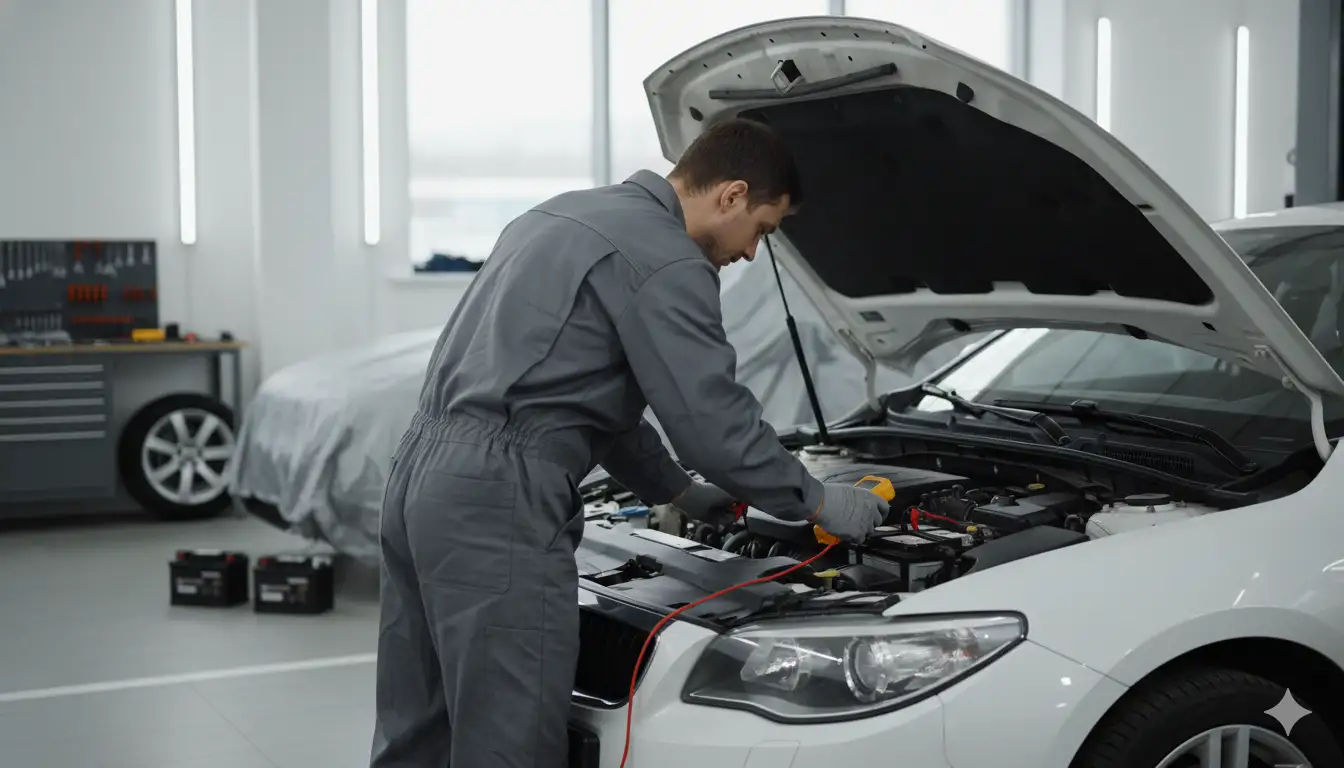
How to Maintain Battery Health During Storage
Proper storage techniques prevent battery damage and extend service life significantly. Whether storing a classic car for winter or leaving a daily driver unused during vacation, these maintenance strategies ensure reliable starting when you return.
Battery Maintainer or Trickle Charger Options
Battery maintainers and trickle chargers serve different purposes despite often being confused. Understanding the distinction helps choose the right device for your needs. According to Autvex’s technical analysis, a battery maintainer (also called a float charger) automatically adjusts output to maintain optimal charge without overcharging.
Battery Maintainer vs Trickle Charger Comparison:
| Feature | Battery Maintainer | Trickle Charger |
|---|---|---|
| Automatic shutoff | Yes | Usually no |
| Overcharge protection | Yes | Limited |
| Long-term connection | Safe indefinitely | Requires monitoring |
| Typical output | 0.5-2 amps | 1-4 amps |
| Price range | $30-100 | $20-60 |
| Best use | Long-term storage | Quick charging |
Modern smart maintainers like Battery Tender and NOCO models use microprocessor control to deliver precise charging[7]. These devices switch to float mode once the battery reaches full charge, preventing damage from overcharging while compensating for self-discharge.
Maintaining a Car Battery in Storage
Long-term vehicle storage requires specific preparation to prevent battery deterioration. Professional storage facilities and experienced collectors follow established protocols to preserve battery life during extended periods of inactivity.
Car Storage Battery Tips
Pre-Storage Battery Preparation:
- Clean terminals thoroughly with baking soda solution
- Apply terminal protectant spray or petroleum jelly
- Fully charge battery before storage begins
- Test specific gravity in flooded batteries (1.265 or higher)
- Document voltage reading for comparison later
For vehicles stored over 30 days, remove the battery entirely and store it in a climate-controlled environment. Batteries stored at 50°F last twice as long as those kept at 80°F[2]. Place the battery on a wooden shelf or rubber mat, never directly on concrete which can accelerate discharge.
Monthly Storage Maintenance:
- Check voltage every 30 days
- Recharge if voltage drops below 12.4V
- Inspect for corrosion or leaks
- Rotate battery position if storing multiple units
- Maintain storage area temperature between 40-60°F
Alternative to Driving Car Regularly
When regular driving isn’t possible, several alternatives help maintain battery charge without moving the vehicle. These methods prove especially useful for those managing multiple vehicles or dealing with travel restrictions.
Effective Alternatives to Driving:
- Engine idling: Run engine for 15-20 minutes weekly (not recommended in enclosed spaces)
- Battery disconnect switch: Install a quick-disconnect to eliminate parasitic drain
- Solar panel maintainers: Provide continuous trickle charge using sunlight
- Capacitor systems: Store energy to reduce battery strain during starting
- Remote start activation: Run engine periodically without leaving home
Professional mechanics caution against short drives under 20 minutes, as these may not fully recharge the battery after starting draws. The alternator requires sustained operation to replenish the 150-350 amps used during engine starting.
How to Jump Start a Dead Battery
Dead batteries remain one of the most common roadside emergencies, with AAA responding to over 6 million battery-related service calls annually[6]. Proper jump-starting technique prevents damage to sensitive electronics and ensures safe operation.
Safe Jump Starting Procedures
Modern vehicles contain sensitive electronics that require careful jump-starting procedures. Following the correct sequence prevents expensive damage to engine control modules, infotainment systems, and other components. For additional electrical troubleshooting, review common electrical issues.
Correct Jump Start Sequence:
- Position vehicles close but not touching
- Turn off all accessories in both vehicles
- Connect positive (+) red cable to dead battery positive terminal
- Connect other red cable end to donor battery positive terminal
- Connect negative (-) black cable to donor battery negative terminal
- Connect final black cable to unpainted metal ground on dead car (not battery)
- Start donor vehicle and let idle for 2-3 minutes
- Attempt to start dead vehicle (maximum 15 seconds)
- Let both vehicles run for 5 minutes before disconnecting
- Remove cables in reverse order
Critical Safety Warnings:
- Never let cable clamps touch each other
- Ensure cables aren’t near moving parts
- Remove jewelry and metal objects
- Wear safety glasses if available
- Check for battery damage before jumping
When to Replace vs Jump Start
Not all dead batteries should be jump-started. Attempting to revive severely damaged batteries risks explosion, acid burns, or electrical system damage. Professional assessment becomes necessary when certain conditions exist.
Replace Battery Instead of Jumping When:
- Battery is over 4 years old and repeatedly dies
- Case shows swelling, cracks, or leaks
- Terminals exhibit severe corrosion that cleaning doesn’t resolve
- Battery has been completely dead for over 30 days
- Voltage reads below 10.5V after charging attempts
- Specific gravity tests show dead cells (flooded batteries)
According to industry data, batteries that require jumping more than three times within a month typically need replacement[3]. Continuing to jump-start failing batteries strains the alternator and can cause premature failure of this expensive component.
Extend Battery Life Non-Driving Methods
Maximizing battery lifespan saves money and prevents inconvenient failures. Industry studies show that proper maintenance can extend battery life by 50% or more beyond the typical 3-5 year service life[2].
Preventive Maintenance Strategies
Regular maintenance prevents premature battery failure and identifies problems early. Professional technicians recommend quarterly inspections for vehicles driven infrequently and monthly checks for those sitting extended periods.
Quarterly Battery Maintenance Checklist:
| Task | Tools Needed | Time Required | Benefit |
|---|---|---|---|
| Clean terminals | Baking soda, brush | 10 minutes | Prevents voltage loss |
| Check fluid levels | Flashlight | 2 minutes | Prevents plate damage |
| Test voltage | Multimeter | 5 minutes | Identifies weak cells |
| Inspect cables | Visual only | 3 minutes | Finds damage early |
| Apply protectant | Terminal spray | 2 minutes | Prevents corrosion |
| Tighten connections | Wrench set | 5 minutes | Ensures good contact |
Professional Tips for Extended Battery Life:
- Keep battery charged above 12.4V at all times
- Avoid deep discharges below 11.8V
- Minimize short trips under 20 minutes
- Park in shade during summer months
- Use battery blanket in extreme cold
- Disconnect when storing over 2 weeks
- Check alternator output annually (13.5-14.5V while running)
Regular professional testing identifies problems before they strand you. Most auto parts stores offer free battery testing using sophisticated analyzers that measure cold cranking amps and internal resistance.
What Happens If a Car Isn’t Driven – Long-term Effects
Extended periods without driving affect multiple vehicle systems beyond just the battery. Understanding these cascading effects helps prioritize maintenance and prevent costly repairs when returning vehicles to service.
System Degradation Timeline:
2-4 Weeks Without Driving:
- Battery voltage drops below optimal levels
- Tire pressure decreases 1-2 PSI
- Brake rotors develop light surface rust
- Fuel begins initial degradation process
1-3 Months Without Driving:
- Battery may fully discharge causing sulfation
- Tires develop flat spots from stationary weight
- Brake components may seize from corrosion
- Engine oil separates and loses viscosity
- Fuel system requires stabilizer to prevent varnish
3-6 Months Without Driving:
- Battery likely requires replacement
- Tires may need replacement due to sidewall cracking
- Brake system requires complete service
- Engine seals dry out causing leaks
- Fuel system needs professional cleaning
- Rodents may nest in engine compartment
For vehicles facing extended storage, consult comprehensive storage guidelines to prevent these issues.
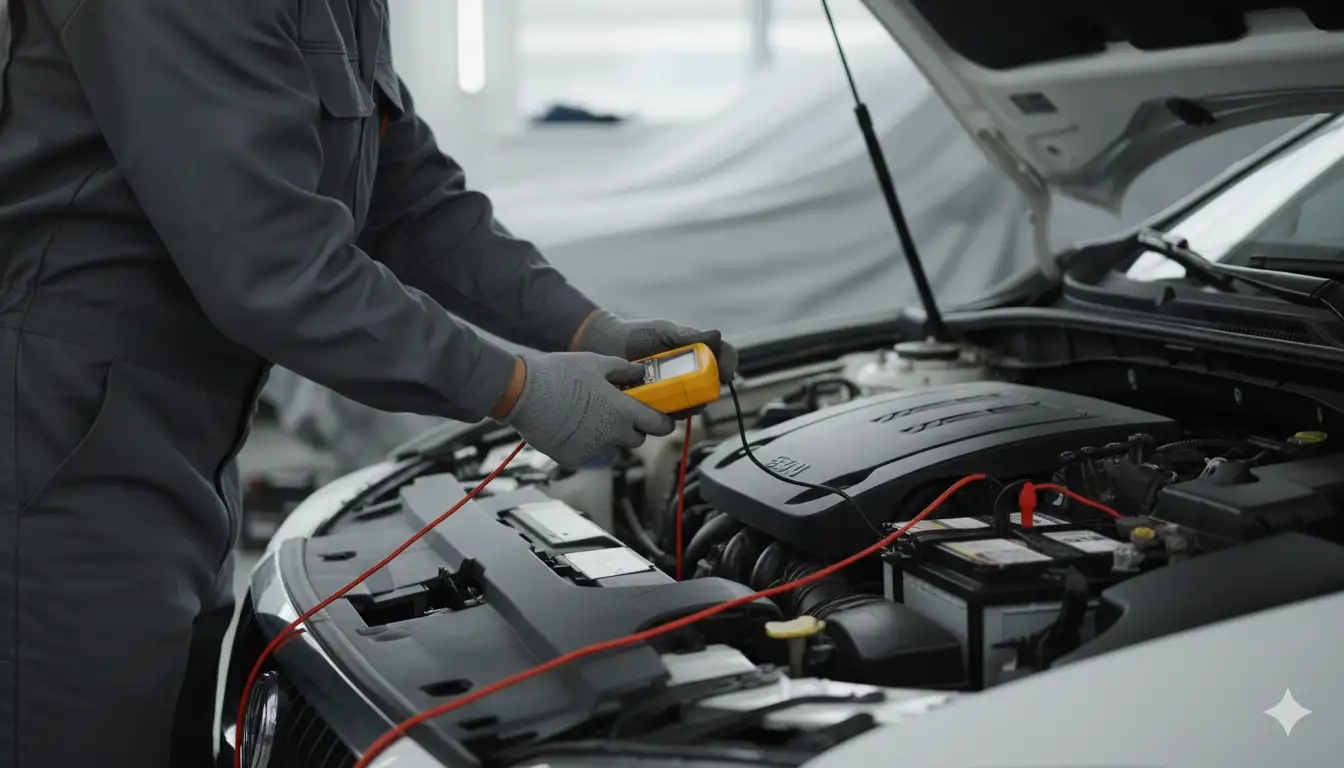
Key Takeaway
Car batteries typically last 2 weeks to 2 months without driving, with newer batteries in good condition lasting up to 8 weeks while older batteries may die in as little as 10 days[1]. Parasitic drain from modern electronics, extreme temperatures, and battery age significantly impact how long your vehicle can sit idle before experiencing starting problems.
Next Steps
Test your battery voltage immediately if your car has been sitting for more than two weeks, and invest in a quality battery maintainer for any storage period exceeding 14 days. Schedule a professional battery test if your vehicle shows any warning signs of battery weakness, and consider preventive replacement for batteries over 4 years old. Address parasitic drain issues promptly by having a qualified technician perform a draw test if your battery repeatedly dies within days of charging.
FAQs
How long can a car sit without being started?
A car can typically sit for 2-4 weeks before the battery dies, though newer batteries in good condition may last up to 2 months[1]. Factors like parasitic drain from electronics, temperature extremes, and battery age significantly affect this timeline. Modern vehicles with advanced electronics tend to drain faster than older models.
Is it bad to not drive your car for a month?
Yes, not driving for a month can drain the battery completely, requiring a jump start or replacement[3]. Extended inactivity also causes fuel degradation, tire flat spots, brake corrosion, and oil separation. Regular maintenance or using a battery maintainer prevents most storage-related problems.
What happens to a car battery if you don’t drive it?
The battery slowly discharges due to parasitic drain from electronics like clocks, alarms, and computer modules[4]. Without the alternator recharging through driving, voltage drops below 12V causing sulfation. This chemical process permanently reduces battery capacity and can ruin batteries in 30 days of complete discharge.
How often should I start my car to keep the battery charged?
Start and drive your car for at least 30 minutes every 1-2 weeks to maintain proper battery charge[1]. Short starts without driving won’t fully recharge the battery and may actually accelerate discharge. If regular driving isn’t possible, use a battery maintainer instead of just idling the engine.
How can I tell if my car battery is draining?
Check for dim headlights, slow engine cranking, dashboard warning lights, or voltage readings below 12.4V when resting[3]. Other signs include power accessories operating slowly, clicking sounds when starting, or needing frequent jump starts. A parasitic draw test can identify excessive drain over 50-100 milliamps.
How long does a new car battery last if not driven?
A new, fully charged battery typically lasts 2-6 weeks without driving, depending on parasitic drain from vehicle electronics[2]. Some new batteries can last up to 2 months in ideal conditions with minimal electronics. Temperature, humidity, and the number of electronic accessories significantly impact this timeframe.
How do you keep a battery from dying on a parked car?
Use a battery maintainer or trickle charger for continuous charging, disconnect the negative terminal for long-term storage, or drive weekly for 30 minutes[7]. Alternative methods include solar panel maintainers, battery disconnect switches, or removing the battery for indoor storage. Regular voltage testing helps catch problems early.
What is a parasitic drain on a car battery?
Parasitic drain is the continuous power draw from electronics when the car is off, including clocks, alarms, keyless entry systems, and onboard computers[4]. Normal drain ranges from 20-50 milliamps, while luxury vehicles may draw up to 85 milliamps. Anything over 100 milliamps indicates an electrical problem requiring diagnosis.
References
- J.D. Power. (2023). How Long Does A Car Battery Last Without Driving It? Retrieved from https://www.jdpower.com/cars/shopping-guides/how-long-does-a-car-battery-last-without-driving-it
- Interstate Battery. (2023). How Long Do Car Batteries Usually Last? Retrieved from https://www.interstatebatteries.com/blog/how-long-do-car-batteries-usually-last
- CarEdge. (2024). Audi A3 Maintenance Schedule and Costs. Retrieved from https://caredge.com/audi/a3/maintenance
- Optima Batteries. (2022). What is ‘Normal’ for Parasitic Draw? Retrieved from https://www.optimabatteries.com/experience/blog/what-is-normal-for-parasitic-draw
- NHTSA. (2022). Battery Safety Initiative. Retrieved from https://www.nhtsa.gov/battery-safety-initiative
- AAA. (2025). Americans Slow to Adopt Electric Vehicles. Retrieved from https://newsroom.aaa.com/2025/06/aaa-ev-survey/
- Northeast Battery. (2024). Trickle Charger Versus Regular Battery Charger. Retrieved from https://northeastbattery.com/trickle-charger-versus-regular-battery-charger/

I am a senior automotive analyst at Autvex. Expert vehicle evaluations, in-depth reviews, and objective analysis helping readers make informed automotive decisions with years of industry experience.





